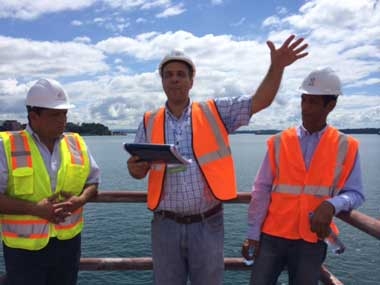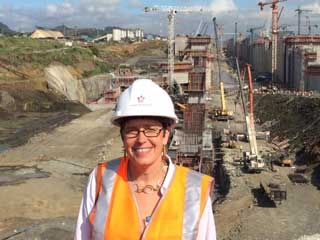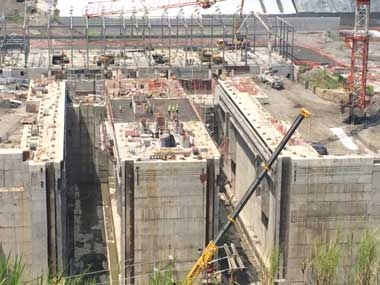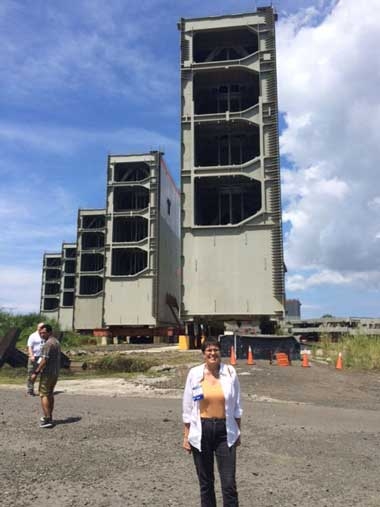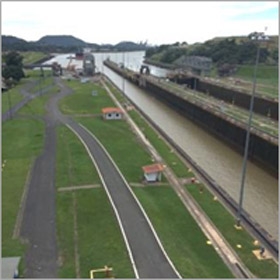
This month I had the opportunity to spend some time at the Panama Canal, a 100-year-old engineering marvel and massive modern construction project. The excursion was part of a joint meeting of Engineers without Borders USA and the American Society of Civil Engineering. They chose Panama as their conference destination to highlight the international growth of their organizations and in celebration of the 100th anniversary of the opening of the Panama Canal (August 15, 1914).
The French attempted to build a sea-level canal in 1880, but the endeavor failed due to poor design and high mortality from disease. After the United States helped Panama gain its independence from Colombia in 1903, the US took on the project. American engineers redesigned the canal to include two sets of three locks, one set on the Pacific entrance to the canal, the other on the Atlantic side. At the time of construction, it was the largest canal lock system ever built.

To reduce the amount of excavation required, an artificial lake was created by building an earth dam. We visited the dam as part of our tour of the canal system. At the time it was finished in 1914, it was the biggest earth dam in the world and created the largest man-made lake. The role of the dam is to maintain the water level of the lake at 88.5 feet of elevation. The construction of the dam itself advanced the field of engineering at the time of construction. The first physical models ever built to test spillway design were constructed in 1910 for the canal project. The dam and spillway have served their purpose well, but now the dam is being reinforced so that the water level in the lake can be raised.
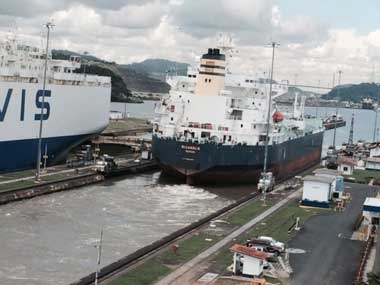
In 1999 ownership of the canal passed to the Panamanian government, as planned in a treaty that was signed by President Jimmy Carter in 1977. As Panama’s largest source of revenue, the canal generates $2 billion per year, more than half of which is used for schools, infrastructure, and social programs. When the Panamanians took over control of the canal, they raised the prices for transit dramatically—the government made more money in the first few years after 1999 than in all 80 previous years of operation. Today, the passage of a large cruise ship or the largest container ship (Panamax) could cost up to $400,000. Nevertheless, the toll is a bargain compared to the more costly alternatives of either a two-week voyage around Cape Horn, or off-loading all containers onto a freight train to traverse the country and reloading another ship on the other side.
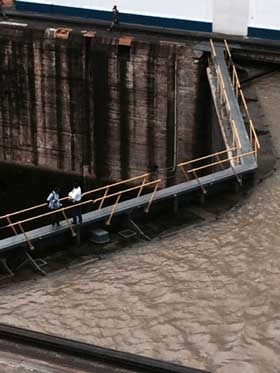
Over the last century, technology has driven the construction of larger ships. These ships are more than 33 meters wide, the current width of the existing locks. To accommodate these very large ships and to increase the capacity of the lock system, the canal authority has launched a major expansion project. The project includes the deepening of the Pacific and Atlantic canal entrances; widening and deepening the Gatun Lake navigational channel; building new locks with water-reutilization basins on the Pacific and Atlantic sides; raising the Gatun Lake maximum operational level; and a new 6.1 km Pacific access channel. The new locks will be 55 meters wide and 427 meters long. For one ship to pass through the three locks, 50 million gallons of fresh water are released to the sea. To put that number in perspective, all of Panama City uses 200 million gallons per day, so finding a way to conserve water in the new locks system was very important. One unique feature of these new locks is that they will be constructed with “reserve” basins, where 60 percent of the water used in each lock will be drained for reuse on the next ship passage. Seeing these locks under construction, I couldn’t help but marvel at the sheer size of the operation. For the largest vessels, passage through these locks will cost $700,000–$1 million.
I would like to return to Panama in 2016 to see these new locks in operation. This wonder of engineering, first conceived and built 100 years ago, has changed the shipping and tourism industries. It has brought us all closer, and made the world flatter by allowing an easier flow of goods and people.

